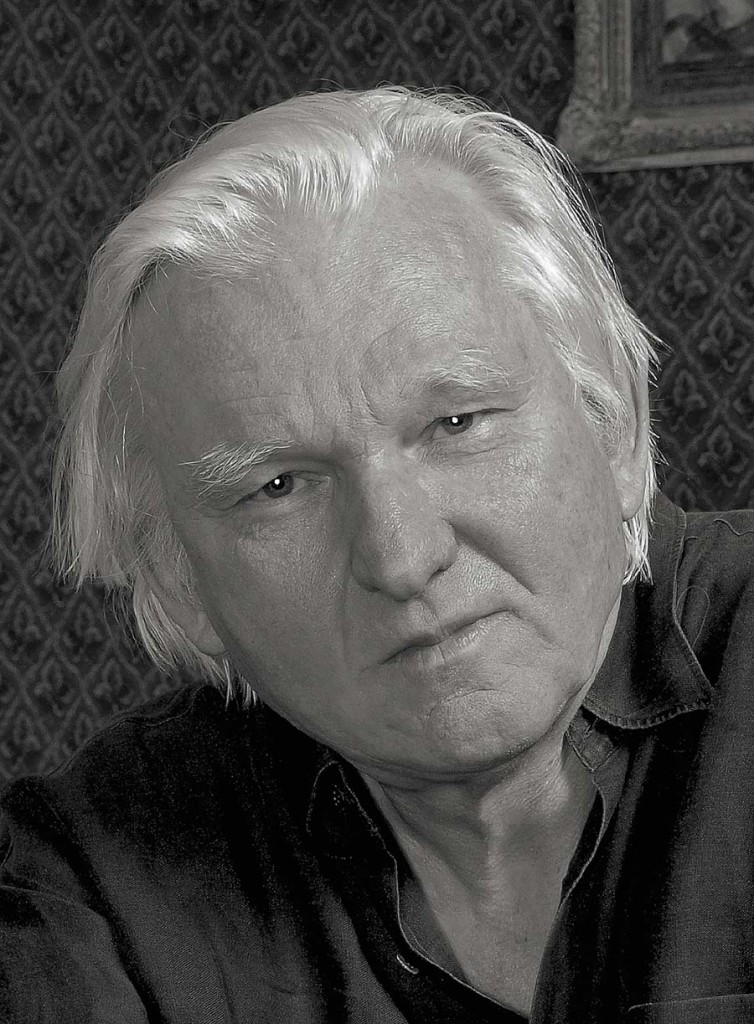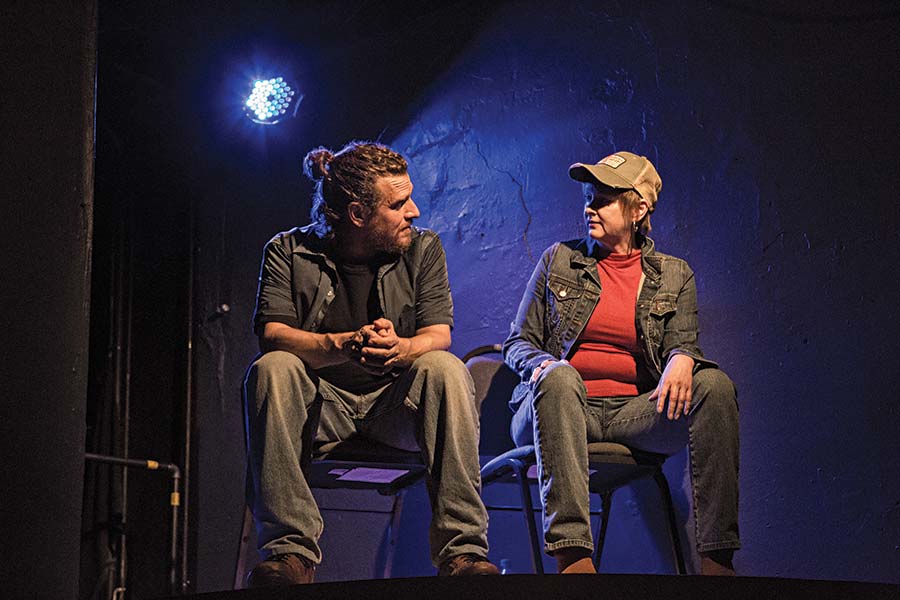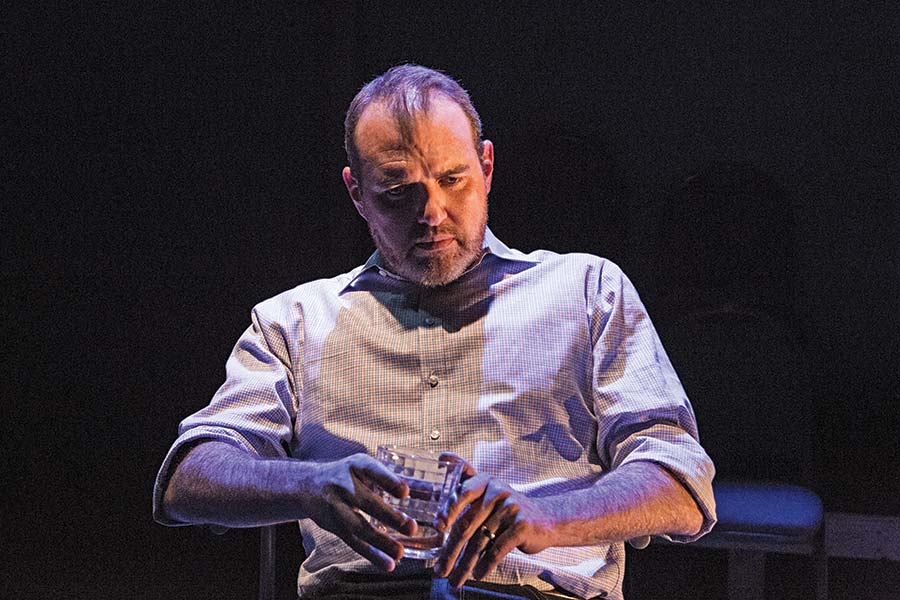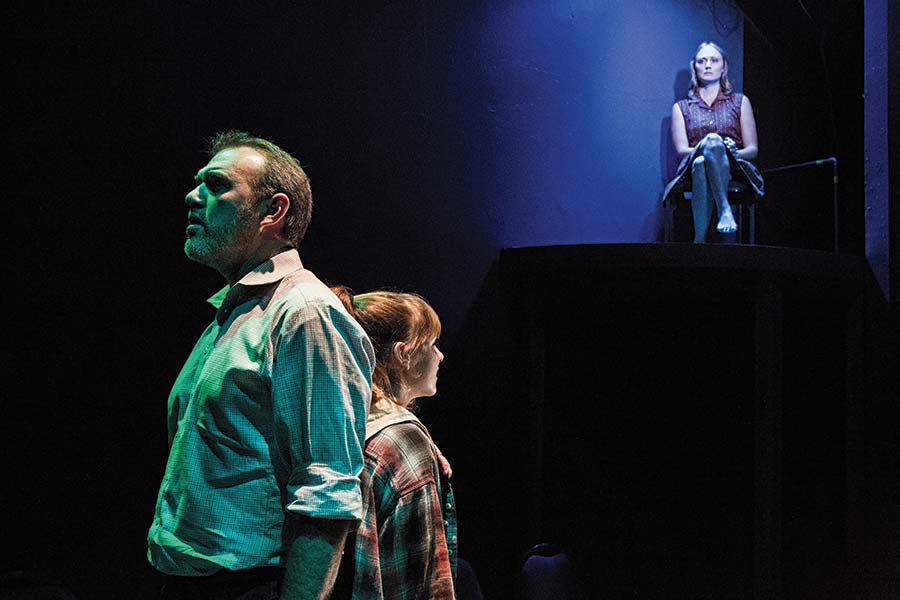Dennis Reardon and David Rabe were both part of the inaugural season of the Newman space at New York City’s Public Theater in 1970–71 and have been friends for decades. Reardon saw Rabe’s Good for Otto at the Gift Theatre in Chicago. The play follows a therapist who becomes too invested in his patients’ lives. This interview accompanies the full playscript of Good for Otto, published in the April 2016 issue of American Theatre.

I believe Good for Otto is your second adaptation of a study of a medical condition, following your A Question of Mercy, which took on matters around assisted suicide. In the case of Otto, the springboard has been the book and therapeutic work of Dr. Richard O’Connor. How did you first encounter him?
These two projects do share a nonfictional basis, but they developed very differently. A Question of Mercy began with an article in The New York Times—an excerpt from a journal by Dr. Richard Selzer. The entry was very spare, and I adhered to the facts and that spare feeling in the play. Good for Otto was totally different. In 1999 my wife was helping with a fundraiser for a local mental health clinic. She asked me to dramatize material that the head of the clinic, Richard O’Connor would provide, drawn largely from his book, Undoing Depression. As I worked on this, I sensed possibilities for a real, independent play. Years went by. Upon occasion I’d look at what I had but I never felt the time was right.
And then you took that short preliminary draft and introduced it to the small Chicago theatre known as the Gift? How fortuitous for both of you.
My relationship with the Gift developed on an independent trajectory. Maybe seven years ago Mike Thornton contacted me about contributing a 10-minute play to their yearly event called 10 by 10. I’m not good at this form—but if I have a fragment, I can develop it. Mike and I talked and I both liked him and was impressed by him. This play had no connection with Good for Otto, but a few years later he contacted me again and this time I pulled a scene from Otto involving Barnard, a character who was my own invention—not drawn from Richard’s book. Reports on how Barnard fared in the 10 by 10 were very good, so I decided I should try to write that play. I sent Mike what I had and asked if he and his ensemble wanted to do a reading. I worked on the material, developing an element that would be key. Richard O’Connor is candid in his book about his mother’s suicide when he was a boy. This had no place in the fundraiser, but I felt it could create a powerful underbelly for a full-length play. I did a new draft that explored this along with some other aspects. The Gift did the reading, and we agreed to do a production.
But then from what you tell me, you did a hell of a lot of writing while you were onsite, which is sort of the “developmental myth” made flesh.
As rehearsal approached, I did another draft. And unlike with A Question of Mercy, I began to give greater freedom to my sensibility, imagination and life experience. I didn’t know it at the time, but this thrust was only beginning.

Did you at some point feel you began writing to specific Gift actors? Or did your initial formulations prove impervious to that?
Specific actors definitely played into the rewriting in Chicago, as did directorial touches. They never intruded, but they began to accompany my thinking. The plan was for me to attend the first two weeks of rehearsal and then leave and return later. Mike and I knew that the first thing we needed to learn was how this particular animal operated up on its feet. So they worked hard in the first 10 days to prepare a “stumble through.” I came away from that event knowing that I needed to do a lot of work. My scheduled time there was almost up, but I said I had to stay, so we figured out the logistics. And then as things go at the best of times, I began to have strong feelings and ideas about what to do.
Which was what?
I holed up in the hotel from Sunday night until Wednesday night—Monday and Tuesday being their days off—and worked. Wednesday through Friday they rehearsed only at night, so I had all day on those days too. It was challenging and exhilarating, and then I’d take what I had into this wonderful bunch of actors and get a feeling for what was there and what was needed and what came next. I’d been too respectful of the source material. Mainly I wanted the stories to hook more into each other. While keeping a necessary meditative aspect, I wanted the patients to affect one another via their effect on the therapists, and then the therapists’ effects on those patients and other patients. Increasing the cohesion and counterpoint as a kind of undertow while the surface feel stayed almost random. Certain elements were key—the doctor running the center had fantasy elements centered around the haunting figure of his dead mother. A troubled little girl—Franny—who in Richard’s original notes had referred to her inner life as “storms,” burrowed further into my imagination. Richard had also written about a fragile patient being so attached to a pet hamster that his well-being was jeopardized when the pet had to have surgery. This fed my long-standing sense of our psyches as funhouse mirrors where the smallest thing can have enormous consequences. Also certain eloquent passages from Richard’s book were kept while their context might be altered or they might be adapted.
I think you were going to say something about the actors affecting the rewriting.
Right. It happened throughout, as I learned about these actors. In one key case—seeing the competence of the young woman playing Franny set me free to send her into the dark territory I knew we needed.
The Gift space is essentially a storefront black box. Did either you or Mike Thornton have qualms about cramming a gigantic 15-member cast into something so confined?
I did in the beginning, but Mike and his designers had strong ideas about how to use the space and their confidence was my reassurance.

Not only did they use the space well, but the proximity lent an almost unbearable intimacy. The voyeuristic aspect initially made me uncomfortable. But gradually it came to feel almost as if we were part of the therapy. Our good will was in some fashion assisting both the therapist and the patients.
You’ve just articulated Mike’s best hope for the production. It worked, powerfully. At times I longed to see it on a proscenium—certain movements and beautiful configurations that Mike developed were made unavailable by the proximity and the fact that the audience doesn’t have a single point of view in the round. But intimacy was the big gain, which had undeniable value.
Can we talk about process? One of the things that has always astonished me and something that bears no resemblance to, say, my approach, is your patience, your doggedness. I hope it’s at least partially accurate to say many writers race pell-mell through a project, trying to get it all down before it runs away and hides. How in the world are you able to retrieve a play such as Good for Otto, maybe 16 years into your past, and rekindle something approaching your initial inspiration? It’s not natural, you know. Or is it?
I’ve done this over my writing life. Sometimes I go from beginning to end, but often there’s a delay—I get so much, know so much, but not enough, and so I put it away and come back later, sometimes years later. Streamers, for example, began as a half-hour fragment written in one sitting. Maybe three years later in another sitting it became a 60-minute play. This version could have been my first New York production, but I knew something was missing. About four years later, another burst gave me what was missing. After that only a few words changed in rehearsal.
You’ve become one of the very few American authors I know to work with equal proficiency in both the theatre and the novel. Recital of the Dog is one of the scariest and most surreal explorations of homicidal madness ever put onto paper. It seems impossible that it could have been written by the same author who subsequently wrote that charming, wry, wistful depiction of small town Iowa life, Dinosaurs on the Roof.
The novels have been good for me, getting my feet on the ground. I have a bit of a reclusive nature, which the solitary haul of a novel comforts, although being alone with Dinosaurs on the Roof was a lot more comforting than the time spent with Recital of the Dog.
I hope you realize I spent the whole play waiting for Otto, the titular character, to make his appearance.쟛ou’re not exactly as forthcoming as Beckett was with Waiting for Godot.
But Otto does show, and it’s good for all when he does.
Dennis J. Reardon is a playwright and a professor emeritus at Indiana University.


